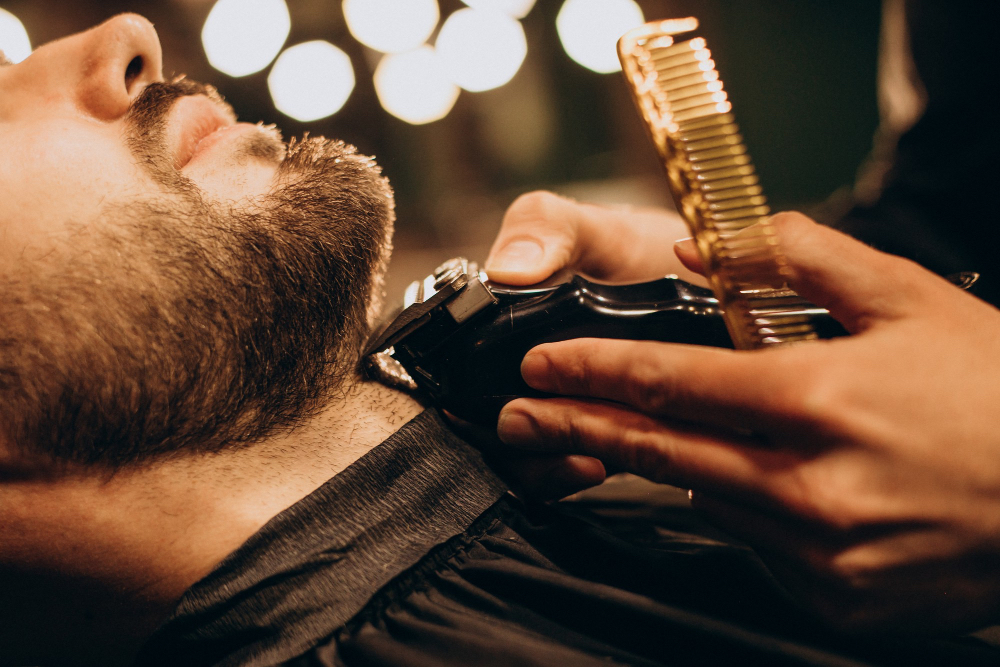In a time where masculinity is constantly being redefined, physical spaces where men come together—places that blend grooming, conversation, and presence—take on deeper cultural meaning. The barbershop is one such space. Once seen simply as a place to get a haircut or a shave, it has evolved into a cultural microcosm, a social lounge, and a modern ritual. It’s where identity is sharpened as much as a beard line, where silence and talk, appearance and presence, coexist.
Barbershops are not just nostalgic throwbacks or aesthetic trends—they’re rooted in tradition and community. Across cities, they’ve become a fixed point for men of different backgrounds, professions, and personalities to share something grounded, even if unspoken: a sense of belonging, a rhythm, a ritual.
Modern Barbershops: Retro Aesthetics, Contemporary Confidence
Walking into a contemporary barbershop often feels like entering a curated space of calm and character. Dark wood counters, vintage mirrors, amber glass bottles, and the comforting scent of talc and bay rum—these design choices are intentional. They aren’t about clinging to the past, but about building an atmosphere where men can pause, feel seen, and express who they are without having to say much.
There’s a certain intimacy in this return to old-school service. But it’s layered with modern awareness. The barber knows how to shape a look, but also how to read a mood. Clients come not just for the cut, but for the conversation—or sometimes the lack of it. And in this space, personal style isn’t just about fashion; it’s about being in control of your image, your time, and your presence.
Where Status, Trust, and Presence Converge
At the center of this space are the barber chairs — pieces of furniture that are far more than utilitarian. It’s a throne of sorts. Heavy, solid, and often beautifully detailed, it commands respect while inviting vulnerability. To sit in a barber chair is to trust. You’re exposed—neck tilted, eyes closed—while someone works a straight razor inches from your throat. That’s not just grooming; that’s surrender.
But it’s also performance. The chair gives you presence. You are framed, reflected, and watched. Adjusting your collar, checking the line of your jaw, leaning back—it’s not vanity, it’s visibility. The barber chair creates a stage, one where every man is both the viewer and the viewed. It blends physical comfort with symbolic power, making it one of the most meaningful objects in the space.
Rituals in a Restless World
The regular barbershop appointment isn’t just about looking sharp—it’s about feeling structured. In a fast-paced, digital world, it’s one of the few analog rituals that remain intact. It marks time. It grounds. Whether weekly or monthly, it becomes a checkpoint—a reminder that taking care of yourself isn’t selfish, it’s essential.
For many, it’s also an escape. A moment to disconnect from screens and reconnect with themselves. Between clippers and conversation, a haircut becomes a reset. A small gesture with big emotional impact.
Mirror, Mirror: Appearance and Self-Image
What you see in the mirror during and after a barbershop session is more than a hairstyle—it’s self-image in real time. A crisp fade, a shaped beard, a cleaned neckline—these things speak to discipline, control, and personal pride. In today’s culture, where visibility often equals identity, how you look and feel are deeply intertwined.
This doesn’t mean men are becoming superficial. Quite the opposite. The barbershop offers a space where care isn’t ridiculed, but expected. Where talking about skin routines and beard oils is normal, not niche. It’s not about hiding flaws—it’s about sharpening the features that define you.
More Than Style: The Significance of the Experience
There’s something deeply human in the simplicity of the barbershop experience. The sounds, the smells, the rhythm—it’s sensory, grounding, real. In a world where masculinity is often boxed in or pushed to extremes, the barbershop offers nuance. It’s a space where men can express themselves without performance, where style meets sincerity.
So when we talk about culture, identity, or even design, let’s not overlook the barbershop. It’s a place where small rituals reveal big truths. And it often begins with one moment of stillness, one place of trust.

